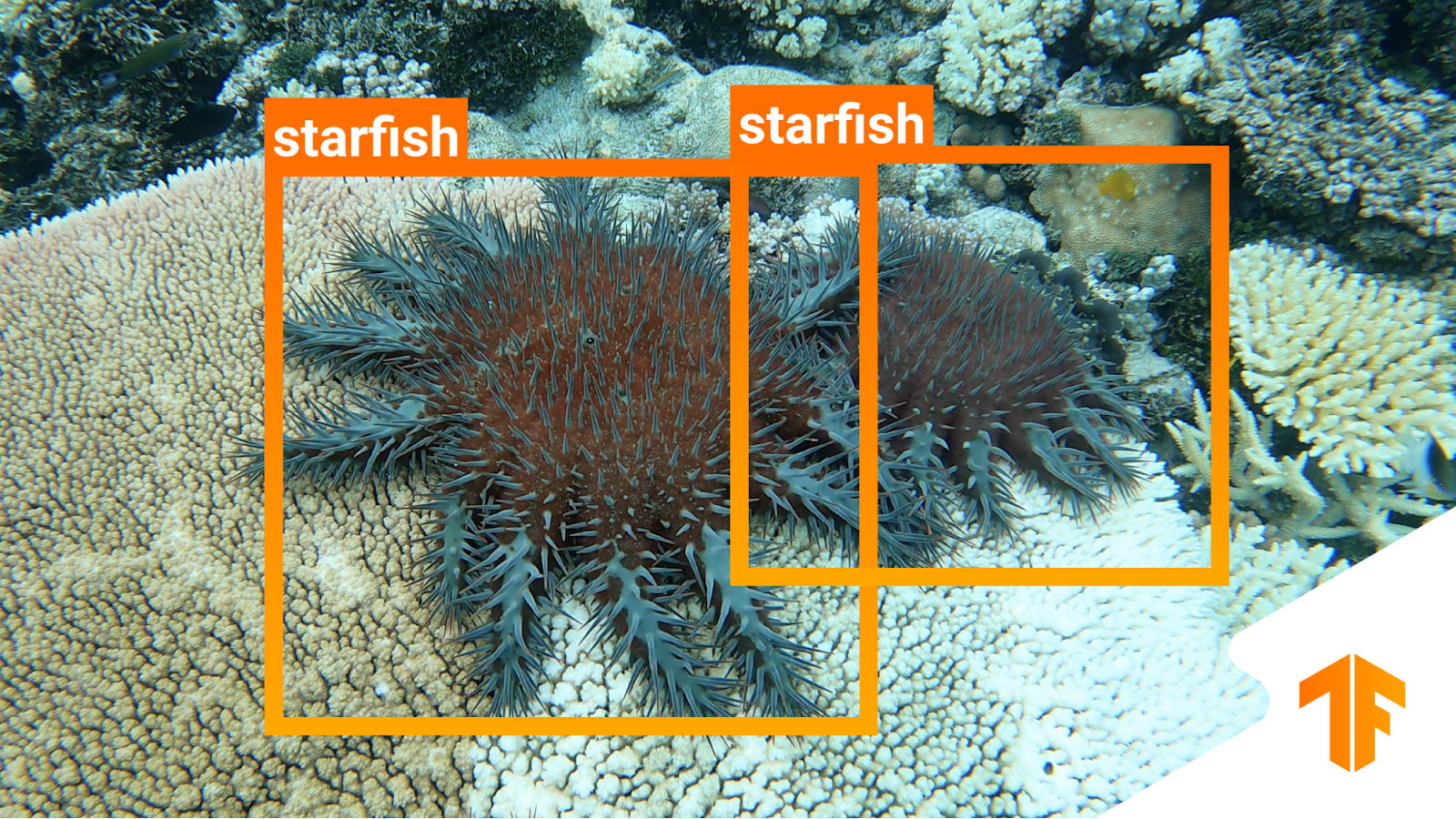نوفمبر 22, 2021 — Posted by Megha Malpani & Tim Davis, Google Product Managers We are excited to announce a TensorFlow-sponsored Kaggle challenge to locate and identify harmful crown-of-thorns starfish (COTS), as part of a broader partnership between the Commonwealth Scientific and Industrial Research Organization (CSIRO) and Google, to help protect coral reefs everywhere. Coral reefs are some of the most d…


Posted by Megha Malpani & Tim Davis, Google Product Managers
We are excited to announce a TensorFlow-sponsored Kaggle challenge to locate and identify harmful crown-of-thorns starfish (COTS), as part of a broader partnership between the Commonwealth Scientific and Industrial Research Organization (CSIRO) and Google, to help protect coral reefs everywhere.
Coral reefs are some of the most diverse and important ecosystems in the world - both for marine life and society more broadly. Not only are healthy reefs critical to fisheries and food security, they provide countless additional benefits: protecting coastlines from storm surge, supporting tourism-based economies and sustainable livelihoods, and pushing forward drug discovery research.
Reefs around the world face a number of rising threats, most notably climate change, pollution, and overfishing. In the past 30 years alone, there have been dramatic losses in coral cover and habitat in the Great Barrier Reef (GBR), with other reefs experiencing similar declines. In Australia, outbreaks of the coral-eating COTS have been shown to cause major coral loss. These outbreaks can strip a reef of 90% of its coral tissue. While COTS naturally exist in the Indo-Pacific ocean, overfishing and excess run-off nutrients have led to massive outbreaks that are devastating already vulnerable coral communities.
Controlling COTS populations is critical to reducing coral mortality from outbreaks. Google has teamed up with CSIRO to supercharge efforts in monitoring COTS using artificial intelligence. This is just the beginning of a much deeper collaboration and we, along with the Great Barrier Reef Foundation, are extremely excited to invite you, our global ML community, to help protect the world's reefs.
We are challenging the Kaggle community to build the most accurate and performant (in terms of runtime and memory usage) crown-of-thorns starfish object detection models for image sequences. For this challenge, we are offering $150,000 in prizes to the best solutions.
We have two tiers of prizes - the first, in standard Kaggle fashion, for the most accurate models. Since we will be deploying these models on the edge, we are offering an additional prize for the most performant models (that fall in the top 10% of the accuracy leaderboard). We are looking for creative ideas on how to maximize performance while working effectively with underwater image sequences. We intend to ultimately bring the most innovative ideas together in a single model that we deploy on the Great Barrier Reef. We plan to open-source the winning model for other scientific organizations and agencies around the world to use.
This is an amazing opportunity to have a real impact protecting coral reefs everywhere! The competition is now live, so please join the challenge today and get started with this notebook. We look forward to seeing what you come up with, good luck!
Acknowledgements: Thanks to everyone whose hard work made this collaboration possible!
Google: Martin Wicke, Kemal El Moujahid, Sarah Sirajudddin, Scott Riddle, Glenn Cameron, Addison Howard, Will Cukierski, Sohier Dane, Ryan Holbrook, Khanh LeViet, Sachin Joglekar, Tei Jeong, Rachel Stiegler, Daniel Formoso, Tom Small, Ana Nieto, Arun Venkatesan
CSIRO: Jiajun Liu, Brano Kusy, Ross Marchant, David Ahmedt, Lachlan Tychsen-Smith, Joey Crosswell, Geoffrey Carlin, Russ Babcock


نوفمبر 22, 2021 — Posted by Megha Malpani & Tim Davis, Google Product Managers We are excited to announce a TensorFlow-sponsored Kaggle challenge to locate and identify harmful crown-of-thorns starfish (COTS), as part of a broader partnership between the Commonwealth Scientific and Industrial Research Organization (CSIRO) and Google, to help protect coral reefs everywhere. Coral reefs are some of the most d…